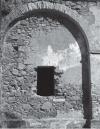Resumen
Este artículo aborda el tema conceptual, metodológico ypreventivo del uso de la cal en la conservación y restauracióndel patrimonio de fortificaciones brasileñas. Se basa en latendencia actual para la conservación sostenible de los bienesculturales que orienta la elección de los materiales utilizadosen los trabajos de intervención; se detiene sobre larelevancia y el alcance histórico cultural del patrimonio fortificadoen Brasil; describe las características de construcciónde los paramentos, las argarnasas, y los problemas parala conservación de estos bienes a través de ejemplos. Porúltimo, propone algunas orientaciones prácticas para el usode la cal en obras de conservación y directrices generales queapoyen los proyectos y programas comunes de colaboracióntécnica.La revista Apuntes se encuentra registrada bajo la licencia Creative Commons Reconocimiento 4.0 Internacional. Por lo tanto, esta obra se puede reproducir, distribuir y comunicar públicamente en formato digital, siempre que se reconozca el nombre de los autores y a la Pontificia Universidad Javeriana. Se permite citar, adaptar, transformar, autoarchivar, republicar y crear a partir del material, para cualquier finalidad (incluso comercial), siempre que se reconozca adecuadamente la autoría, se proporcione un enlace a la obra original y se indique si se han realizado cambios. La Pontificia Universidad Javeriana no retiene los derechos sobre las obras publicadas y los contenidos son responsabilidad exclusiva de los autores, quienes conservan sus derechos morales, intelectuales, de privacidad y publicidad.
El aval sobre la intervención de la obra (revisión, corrección de estilo, traducción, diagramación) y su posterior divulgación se otorga mediante una licencia de uso y no a través de una cesión de derechos, lo que representa que la revista y la Pontificia Universidad Javeriana se eximen de cualquier responsabilidad que se pueda derivar de una mala práctica ética por parte de los autores. En consecuencia de la protección brindada por la licencia de uso, la revista no se encuentra en la obligación de publicar retractaciones o modificar la información ya publicada, a no ser que la errata surja del proceso de gestión editorial. La publicación de contenidos en esta revista no representa regalías para los contribuyentes.


